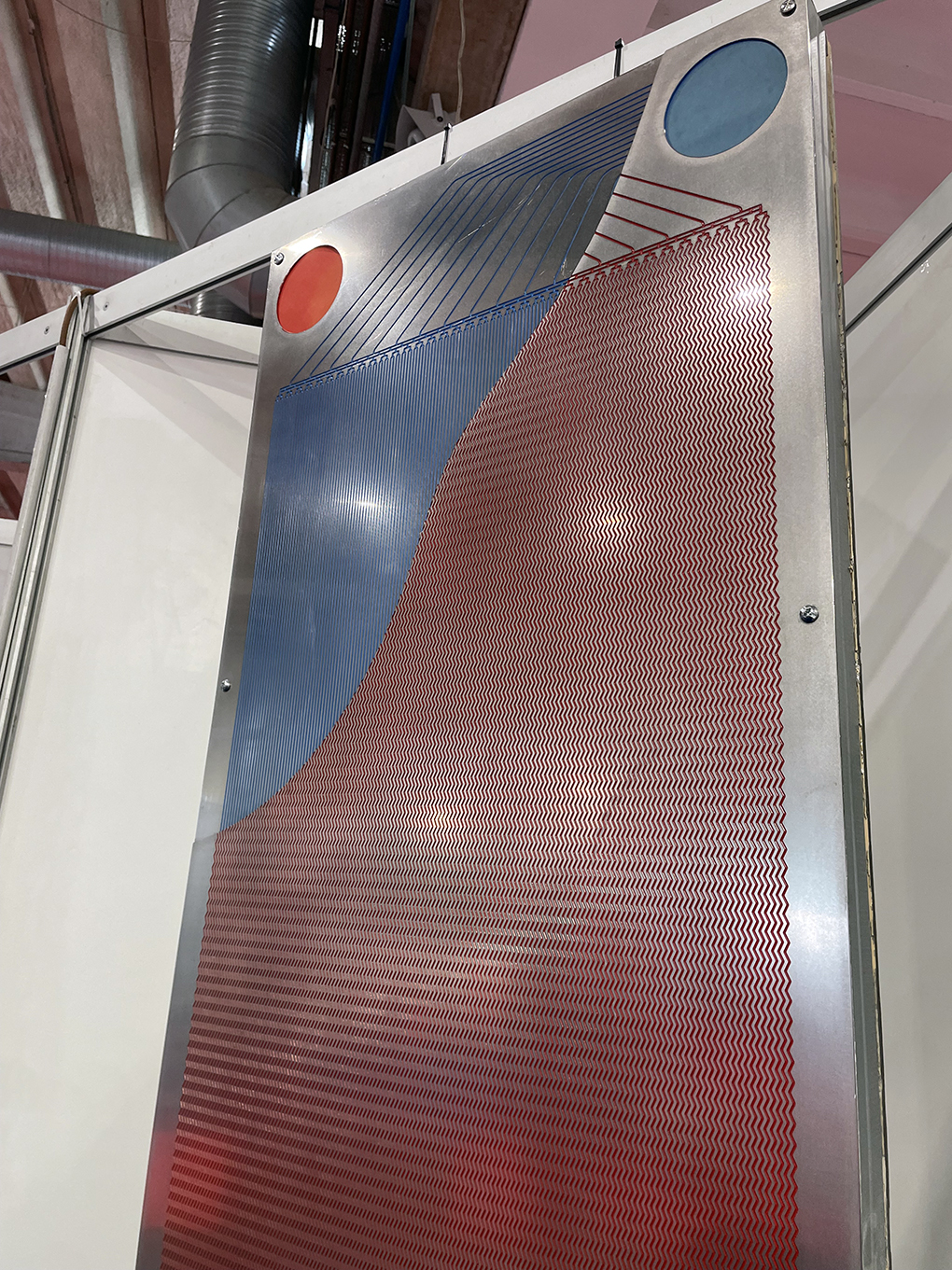Following with the series of articles on multi-stage compressors, PCHE (Printed Circuit Heat Exchangers) heat exchangers represent a cutting-edge solution for interstage cooling, capable of managing complex flows in a compact design. Their multi-stream structure allows indeed for the integration of multiple heat flows in a single device, reducing space and complexity.
Critical advantages of PCHEs:
1. High thermal efficiency:
◦ Microstructured channels that maximize heat transfer.
◦ Reduction of energy losses.
2. Compactness:
◦ Extremely compact design, ideal for systems with limited space.
3. Resistance to extreme conditions:
◦ Designed to handle high pressures and temperatures, making them perfect for applications with hydrogen and other technical gases.
4. Versatility:
◦ Possibility of integrating multiple heat flows in a single device, reducing the number of equipment required.

Microchannels pattern in the plates of PCHE heat exchangers
Disadvantages:
• High initial cost:
◦ PCHEs require a higher initial investment compared to traditional solutions.
• Clean or filtered fluids:
◦ Cleaning of microstructured channels may require specific techniques, so it is preferable to have filtered or otherwise clean fluids
Why then choose PCHEs? Despite the disadvantages, PCHE exchangers represent a strategic choice for critical applications where efficiency, compactness and resistance are essential. In particular, in the hydrogen sector, PCHEs offer a competitive advantage in terms of performance and sustainability, becoming a key technology for the energy transition.
